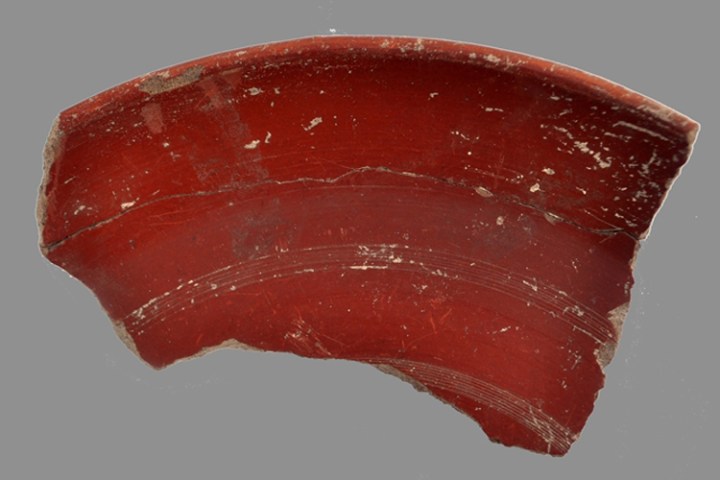
Found by University of Naples archaeologists Marco Giglio, Giovanni Borriello, and Stefano Iavarone, the pans were located in the ancient city of Cumae, which once stood near present-day Naples. In the equivalent of an ancient dumpster pit, the trio found roughly 50,000 different pieces of lids, pots, and pans. Though each turned out to be of varying shape and thickness, the fragments boasted one incredibly similar characteristic: a distinct red-slip coating. Moreover, it’s the same sort of red-slip coating cookware mentioned in the ancient Roman cookbook De Re Coquinaria that calls for its use when making meat-based stews.
“We found a dump site filled with internal red-slip cookware fragments,” Giglio tells Discovery News. “The dumping was used by a pottery factory. This shows for the first time the Cumane patellae (cookware from the city of Cumae) were indeed produced in this city.”
Back in 1975, archaeologist Giuseppe Pucci attempted to identify a series of pans from Cumae, saying they were a form of pottery more widely referred to as Pompeian Red Ware that boasted a similar red-slip coating to what was found near Naples. Until Giglio’s team discovered the fragments, though, no physical remains existed to corroborate Pucci’s claims. Though the fragments were found in what the team considered a dump, the archaeologists were impressed at the quality of what was recovered.
“Cumae indeed appears to be the main production center of these anti-adherent pans widely used throughout the Roman Empire,” Giglio continues. “Finding a dump like this one is an archaeologist’s dream.”
Despite the seemingly large haul of found fragments, only ten percent of the area previously filled with pottery factories has been explored. After analyzing the unearthed cookware, Giglio says they date all the way back to the Roman rule of Augustus and Tiberius from 27 B.C. to 37 A.D. Though it’s likely the remaining area contains heaps of similar pots and pans, it’s unknown if the team intends to continue excavation of the site.


